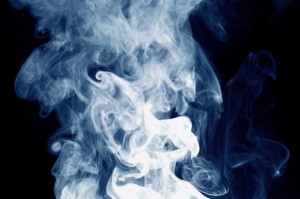The dragging out of spring that we are experiencing this year is probably causing lots of unseen problems. One that we are aware of is the burning of wet wood, which produces more smoke, and which puts more toxic carbon monoxide in the air. Outside, this is an environmental concern. Indoors, it threatens your safety directly and it indirectly contributes to other threats.

It is definitely worth spending a few bucks to build a fire with seasoned wood – and do not forget to re-open your damper! Your chimney, of course, is another thing to worry about during a spring like this, and its condition may compound the toxic gas problem. You may have shut the house off from continuing cold and dampness issuing from the fireplace, but your chimney is still absorbing it all.
Obviously, the colder a chimney is to begin with, the longer it takes to warm up. When hot air starts spiraling up the flue, the temperature difference is greater and more condensation occurs. It is similar to fogging your sunglasses with your breath — except that it is “tar fog” and a lot more dangerous.
When moisture gets into your chimney, from up or down, it reacts with any creosote in the flue. Gases are given off in the reaction and, if toxic gases are not properly vented from the home, they can poison and kill. Smoke, we can see, which is helpful; carbon monoxide, we cannot, so maintaining properly installed and functional detectors is critical.
It is natural enough for us to focus on your fireplace, but other appliances that use combustion to produce heat can also produce toxic gas. All of them need to vent properly to the outdoors and all of them need to work together as a single system. If you have any doubts about the condition of an appliance or its venting, take the time to check with the right professional.
